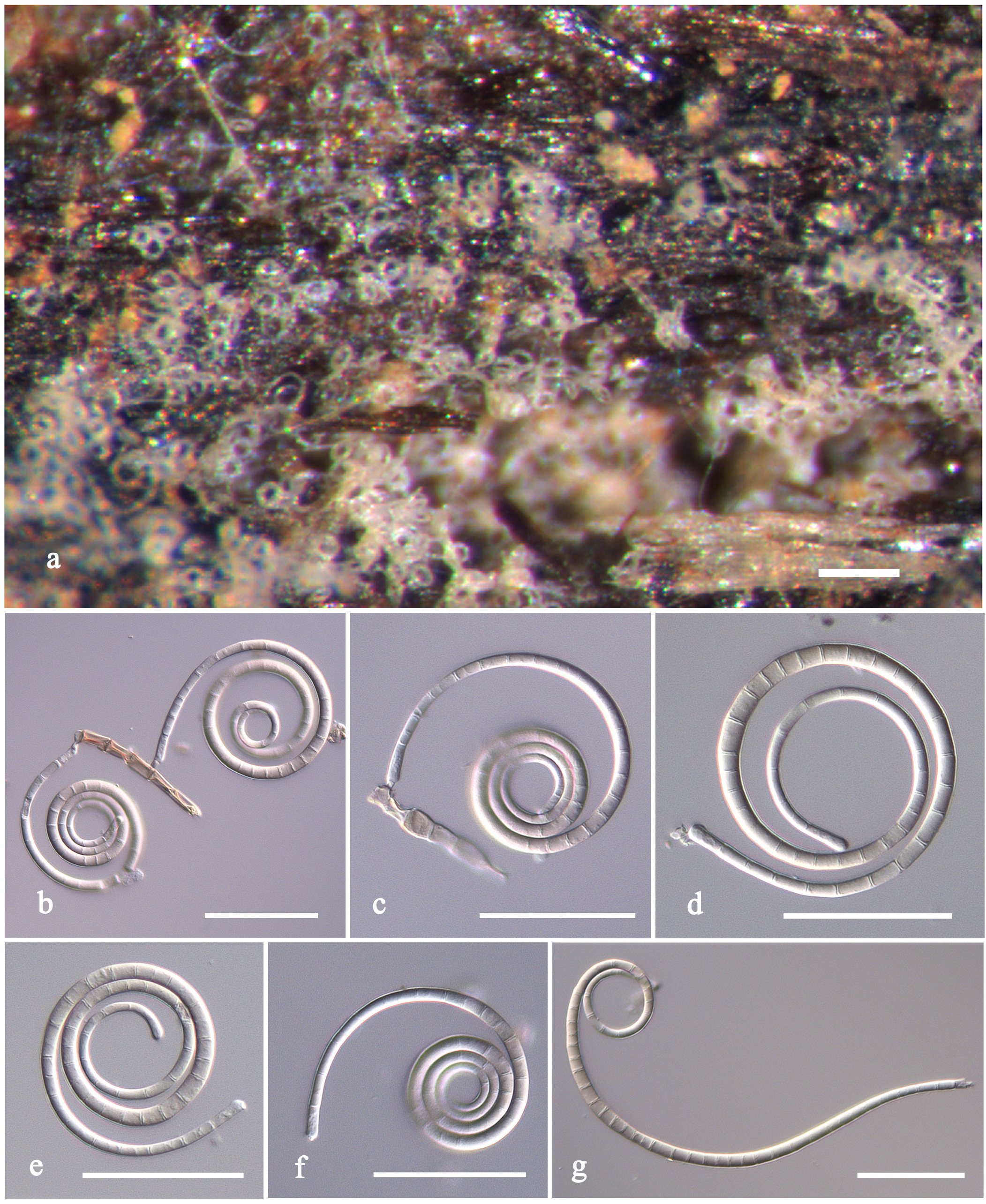Helicomyces roseus Link, Mag. Gesell. naturf. Freunde, Berlin 3(1-2): 21 (1809).
Saprobic on woody substrata. Mycelium partly immersed, partly superficial, pale brown, septate, sparsely branched hyphae, with masses of crowded conidia. Sexual state: Unknown.Asexual state:Conidiophoreserect, 3–4 × 2–3 µm( = 4 × 3 µm, n = 5), septate, thick-walled, pale to moderately dark brown, macronematous, short. Conidiogenous cells monoblastic or polyblastic, terminal or intercalary, integrated, subhyaline, denticulate. Conidia (40-)47–65(-75)µm diam., and conidial filament 4.5–6 µm wide ( = 54 × 6 µm, n = 20), with (298.5-)360–398 µm long, loosely coiled 2½–4 times, becoming loosely uncoiled in water, rounded at apical end, bright, hyaline to pale yellow, multiseptate, up to 56-septate, slightly constricted at septum, smooth-walled.
Material examined: USA, North Carolina, Bearwallow Cove, on rotten wood, W.W. Diehl, 4 January 1927,Detr: J.A. Stevenson (BPI 421361).
Fig.1 Helicomyces roseus (BPI 421361).a Conidia arise directly from hyphal cells on natural substrata. b, c Conidiophores with attached conidia. d-g Conidia. Scale bars: a, g=100µm, b-f=50µm

